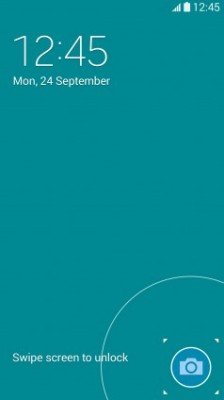
- GALAXY S5 PHOTOSPHERE 720P
- GALAXY S5 PHOTOSPHERE 1080P
- GALAXY S5 PHOTOSPHERE ISO
- GALAXY S5 PHOTOSPHERE PLUS
One can also shoot 4K videos with the primary snapper. The Xperia Z3's camera also supports defocus of the background, giving users the ability to blur the background. The camera also supports face detection, panorama, HDR, geotagging and touch focus. The Xperia Z3 has a sensor size of 1/2.3 inch.
GALAXY S5 PHOTOSPHERE ISO
The Xperia ZR also supports ISO 12800 and is able to capture fantastic images with great detailing even in low-light conditions. This smartphone's camera has a 25mm lens, which ensures a wider field of view or angle. The Sony Xperia Z3 features a 20.7MP primary camera (5248 х 3936 pixels). While the LG G3 can take detailed pictures and good images in low-light conditions, the color accuracy of the smartphone's camera leaves a lot to be desired. The smartphone also has a 2.1MP secondary camera. The LG G3's primary camera can record 4K videos and the smartphone supports HDR, geotagging, autofocus, panorama, dual-LED flash, face detection and OIS as well. The magic focus option on the LG G3 lets the lens of the camera create focal points while shooting as well. The smartphone also has a feature that is quite handy: gesture shutter, which basically enables the user to click pictures by alerting the shutter via a hand gesture or motion rather than the press of a button. However, the LG G3's camera has OIS and a feature for soft light that aids selfie users in their quest for the perfect picture. The LG G3 sports a 13MP primary camera with an autofocus lens, which at first glance is reminiscent of the conventional digital cameras available currently. However, the camera is unable to take good low-light images, as well as night and indoor shots. The Galaxy S5's camera also supports 4K video recording and houses a 2MP secondary camera.
GALAXY S5 PHOTOSPHERE PLUS
The Selective Focus mode is also a plus as it lets users change the image focus between the foreground and background. The Galaxy S5 also supports HDR, which will let a user see what the image will be like finally prior to shooting, face/smile detection, dual shot, geotagging, touch focus, as well as the ability to capture both HD videos and images simultaneously.Īnother impressive feature is the Shot & More mode, which basically lets a user snap up images and adjust them later with ease. It touts a 16MP primary camera that has a 0.3-second autofocus time, which basically means that the smartphone's phase detection autofocus lens is able to click comprehensive images in the blink of an eye. The Samsung Galaxy S5's camera has won accolades for its superior performance. The only thing that sets the iPhone 6 Plus camera apart from its smaller sibling's is that it packs in optical image stabilization (OIS), which aids in the snapping of clear images even if the smartphone is not steady. The iPhone 6 and iPhone 6 Plus have the same camera capabilities and features.
GALAXY S5 PHOTOSPHERE 720P
The iPhone 6 also has a 1.2MP FaceTime camera that can record 720p videos at 30 frames per second. The iPhone 6 also supports geotagging, touch focus, smile/face detection, HDR and the ability to record images and HD videos at the same time.
GALAXY S5 PHOTOSPHERE 1080P
The primary camera is able to record 1080p videos at 60 frames per second.

The smartphone has fabulous low-light capabilities. The smartphone boasts a 8MP primary iSight camera, and the notable feature on the device is its super swift phase-detection autofocus or "focus pixels."Īpple's technology for local tone mapping is also a bonus as it helps reduce overexposure and makes the camera of the smartphone ideal for shooting pictures in daylight. The flagship Apple smartphone is sought after by enthusiasts for its impeccable features and functionalities, and its camera packs quite a punch as well. With camera usage being a major consideration for many users when purchasing a smartphone, we take a look at some of the best camera smartphones available: the iPhone 6, iPhone 6 Plus, Samsung Galaxy S5, LG G3, Sony Xperia Z3, Nokia Lumia 1020, HTC Desire Eye and Google Nexus 6.

Thanks to cameras on smartphones, users can now click pictures whenever they want and not miss that special moment either. Moreover, it is not often that people lug around a point and shoot camera with them. If one is on the go, then it is far simpler to snap up a picture with the smartphone rather than a traditional camera. With a plethora of smartphones to choose from, consumers are spoiled with loads of choices but also faced with the dilemma of which device would best suit their purpose.Ī highly sought after feature of smartphones is their camera capability, especially with selfies being all the rage. (Photo : Kārlis Dambrāns) Galaxy S5 (Photo : Kārlis Dambrāns) LG G3 (Photo : Sony) Sony Xperia Z3 (Photo : Google) Google Nexus 6 (Photo : Nokia) Nokia Lumia 1020 (Photo : HTC) HTC Desire Eye (Photo : Apple) The iPhone 6 and iPhone 6 Plus


 0 kommentar(er)
0 kommentar(er)
